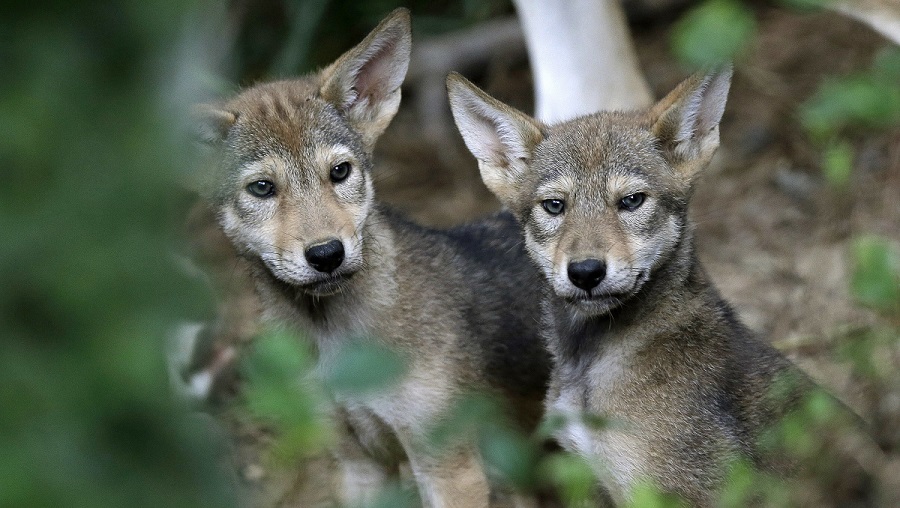An incredibly rare event has occurred in the wild as a critically endangered red wolf has given birth to a litter of pups for the second time in five years, offering renewed hope for the species’ survival.
The remarkable litter, consisting of three females and two males, was born in early April within the confines of the Alligator River National Wildlife Refuge located in North Carolina.
The U.S. Fish and Wildlife Service’s Red Wolf Recovery Program (RWRP) announced this exciting news on May 10 via Facebook, even sharing heartwarming images of the adorable pups.
The mother, known as 2225, and the father, known as 2323, had their first litter in 2022, marking the first documented wild births since 2017. The young from the previous litter have remained with their parents and are anticipated to assist in rearing their new siblings, as confirmed by representatives from the RWRP.
With the parents’ success in raising their initial litter and the support their older offspring will provide, conservationists were confident about introducing a sixth pup into the pack.
A few weeks after the birth of the new litter, a male pup born at the Point Defiance Zoo and Aquarium in Washington state was introduced to the litter and welcomed by the parents. This act of adoption has resulted in a pack of 13 individuals, now representing the largest known red wolf group in the wild.
RWRP representatives expressed great joy and celebrated the birth of the new litter, stating on Facebook, “Every generation yields a newborn hope for the recovery of the red wolf.”
Red wolves (Canis rufus) are classified as critically endangered by the International Union for Conservation of Nature (IUCN) Red List of Threatened Species. Currently, there are only an estimated 20 to 30 individuals remaining in the wild, excluding the new litter.
Red wolves were once widespread across the southeastern and south-central United States but were driven to the brink of extinction due to hunting, habitat destruction, and hybridization with coyotes, according to the Center for Biological Diversity.
In addition to the wild population, approximately 270 captive red wolves are housed in zoos throughout North America, according to The Wildlife Society. It is crucial to continue introducing captive wolves into the wild, either by releasing adults or fostering pups into existing packs, to enhance genetic diversity and prevent inbreeding, which can lead to genetic conditions impacting survival.
In the future, cloning technology may also play a role in bolstering the population of red wolves. In September 2022, Chinese scientists announced the successful cloning of an Arctic wolf pup (Canis lupus arctos), marking the first-ever cloning of its kind. While no current cloning projects exist for red wolves, this scientific advancement opens up possibilities for similar efforts to conserve endangered species.
The struggle for survival extends beyond red wolves, as numerous species in the United States face the threat of extinction in a rapidly changing world. A report released by NatureServe, a conservation group focused on biodiversity in North America, revealed alarming statistics. Up to 40% of animal species and 34% of plant species in the United States are at risk of going extinct.
In a concerning development, the U.S. Fish and Wildlife Service removed 23 species from the Endangered Species Act in 2021 because they had not been observed in the wild for decades and were presumed to have gone extinct.

